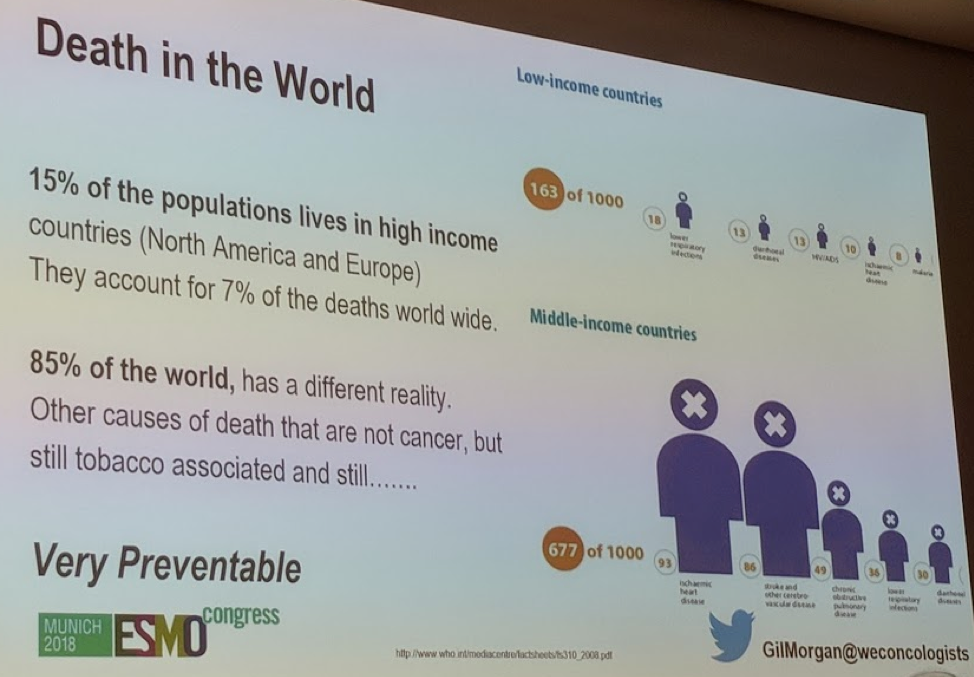This may be the most important talk at a cancer conference – with the widest impact on cancer treatment and prevention! This topic needs greater attention. For all the effort and money put into drug development, smoking prevention can have a much greater impact on cancer prevention and treatment!
The first part of his talk included sobering facts about tobacco use – its effect on cancer, but also other common conditions that have a lasting international impact.

Everyone is affected, not just adults and not just smokers!
- 88% of smokers start before age 18
- Second-hand smoke affects children – up to 67% of African-American children, 30-36% of Caucasian and Hispanic children in the United States
- SHS causes 600,000 premature deaths per year worldwide!
- Heart disease
- Stroke
- COPD
- Diabetes
- Asthma exacerbation in children
- Birth defects in mothers who smoke while pregnant
- Low birth weight
- In Indonesia, 41% of boys age 13-15 smoke!
The WHO “Tobacco control vaccine” - a program of changes that has been shown to reduce smoking uptake.

He then provided an example: in Scotland – instituting a smoke-free legislation lead to a reduction of 18% in asthma exacerbation related admissions in children, 17% drop in heart attacks in the first year, 39% reduction in SHS exposure in children
Decreasing tobacco consumptions leads to a decrease in:
- Heart disease
- Stroke
- Diabetes
- Cancer
- Respiratory diseases
- 50% of smokers are in 5 countries: Russia, China, India, Brazil, and Indonesia

Reducing tobacco consumption also has other effects:
- It can help decrease poverty by helping poorer individuals break out of the cycle of poverty
- Can help reduce the exploitation of child workers and small-scale tobacco farmers
- Can help improve the environment
I personally like a quote he used – “100% tax on something that costs nothing is still nothing!” The cost of the actual product must be increased for the tax to have any impact.
His summary slide:

Presented by: Gilberto Morgan, MD, Department of Oncology, Skåne University Hospital, Lund, Sweden
Written by: Thenappan Chandrasekar, MD (Clinical Instructor, Thomas Jefferson University) (twitter: @tchandra_uromd, @TjuUrology) at the 2018 European Society for Medical Oncology Congress (#ESMO18), October 19-23, 2018, Munich Germany


